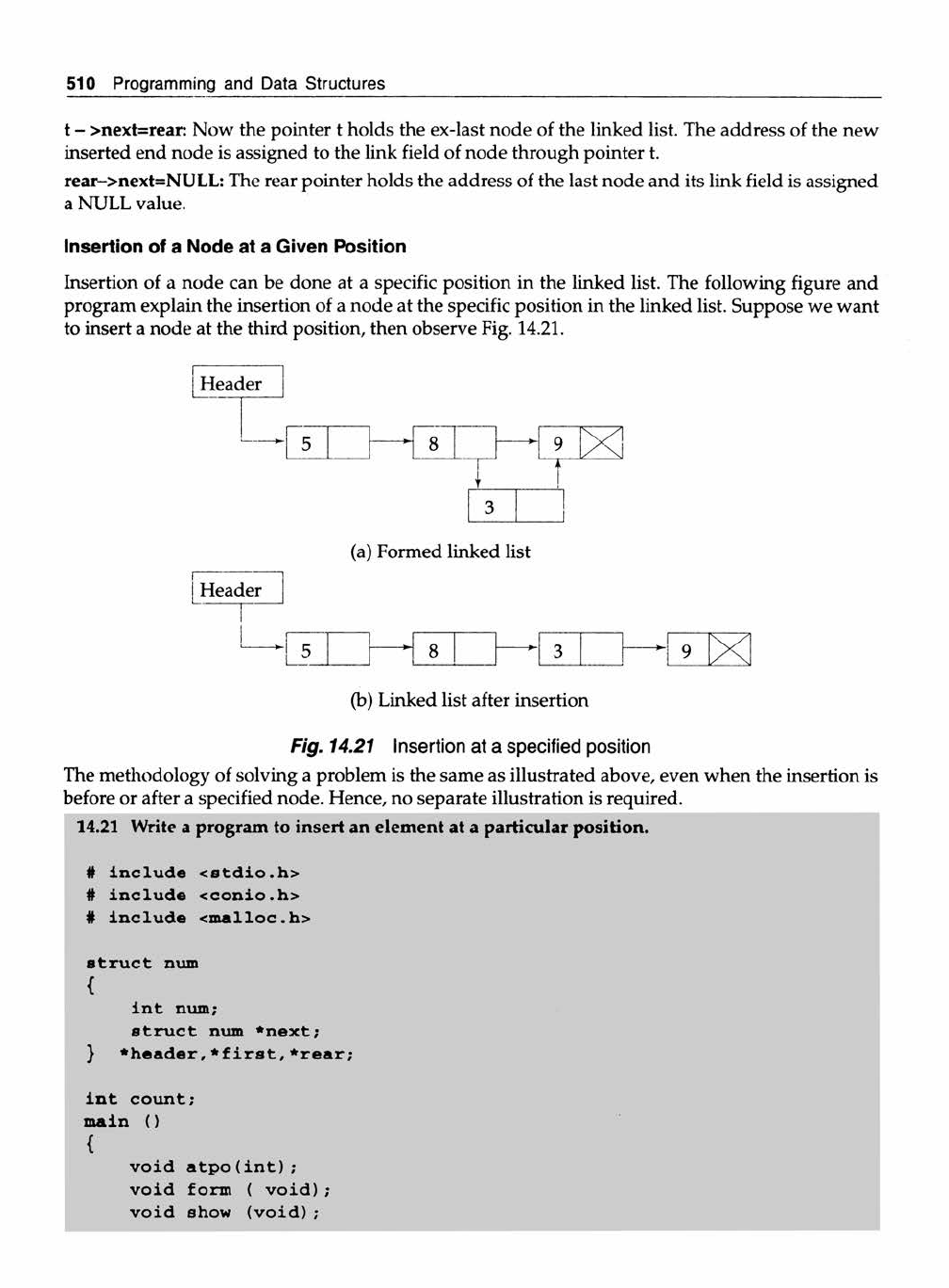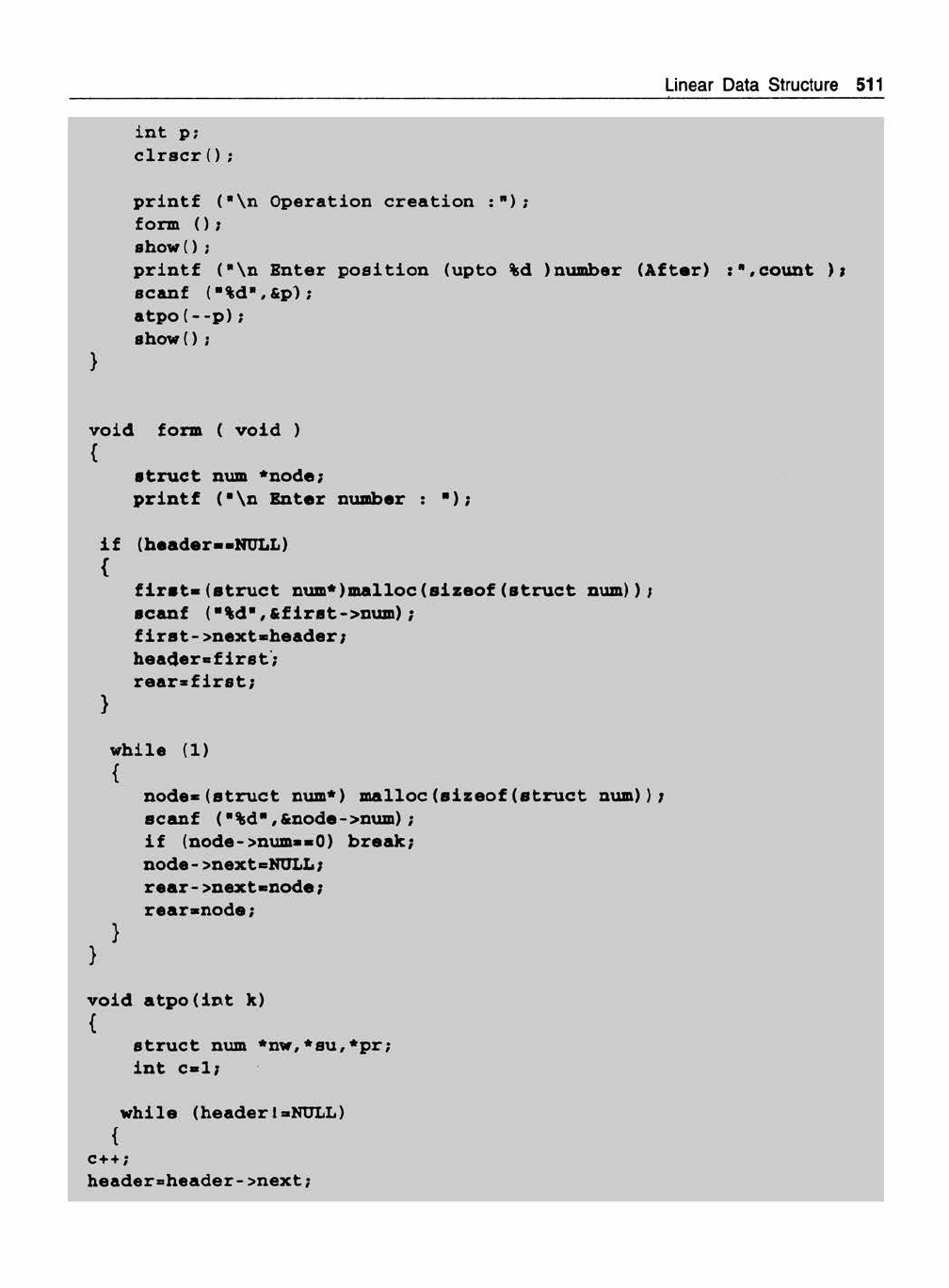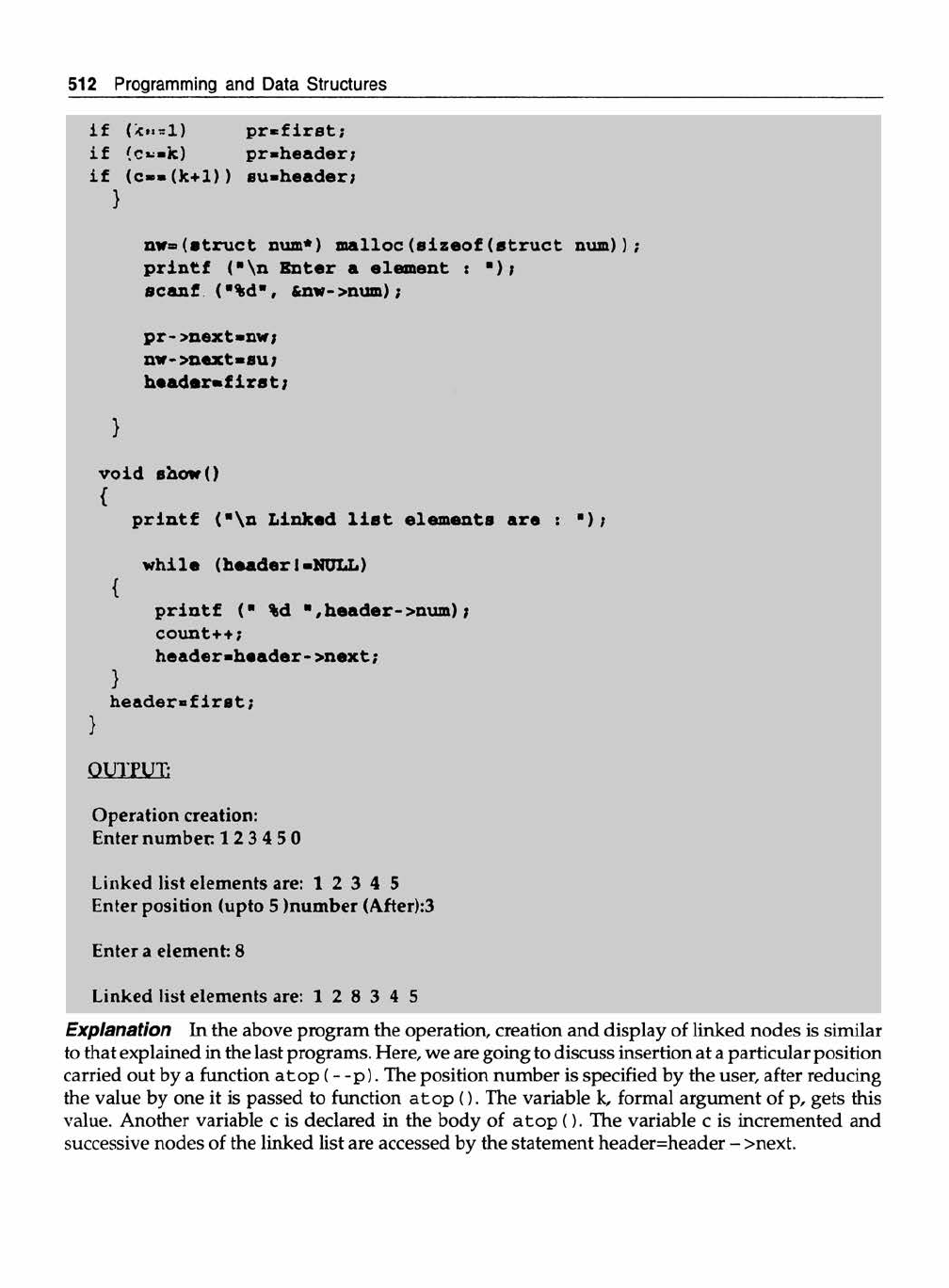
510 Programming and Data Structures
t - >next=rear: N ow the pointer t holds the ex-last node of the linked list. The address of the new
inserted end node is assigned to the link field of node through pointer t.
rear->next=NULL: The rear pointer holds the address of the last node and its link field is assigned
a N U L L value.
Insertion of a N ode at a G iven Position
Insertion of a node can be done at a specific position in the linked list. The following figure and
program explain the insertion of a node at the specific position in the linked list. Suppose we want
to insert a node at the third position, then observe Fig. 14.21.
(a) Formed linked list
r “
^Header
! J
00
, ”
X
~^i 5
3
9
(b) Linked list after insertion
Fig. 14.21 Insertion at a specified position
The methodology of solving a problem is the same as illustrated above, even when the insertion is
before or after a specified node. Hence, no separate illustration is required.
14.21 Write a program to insert an element at a particular position.
# include <stdio.h>
# include cconio.h>
# include cmalloc.h>
struct num
{
int num;
struct num *next;
} *header,*first,*rear;
int count;
main ()
{
void atpo(int);
void form ( v o id );
void show (v oid);

Linear Data Structure 511
int p;
c lr s c r();
printf ("\n Operation creation
form () ;
show () ;
printf (”\n Enter position (upto %d ) number (After) count );
scanf ("%d",&p1;
atp o (--p );
show () ;
>
void form ( void )
{
struct num *node;
printf ( ”\n Enter number : ”);
i f (header— NULL)
{
first*(stru c t num*)malloc(sizeof(struct num));
scanf ( a%d”/&first->num);
f ir s t - >next«header;
header«first;
rear= first;
>
while (1)
{
node*(struct num*) malloc(sizeof(struct num));
scanf ( ”%d”, &node->num);
i f (node->num«*0) break;
node- >nextbNULL;
rear- >next«node;
rear*node;
>
}
void atpo(int k)
{
struct num *nw/*su/*pr;
int c *l;
while (header 1*NULL)
{
C + +;
header=header->next;

512 Programming and Data Structures
i f (k»4t:1) p r-firs t;
if (ct-k) pr-header;
if (c -«(k + l)) subheader;
}
nw= (struct num*) m alloc(sizeof(struct num));
printf ("\n Enter a element : ■);
scanf ("%d", &nw->num);
pr->next«nw;
nw->next-su;
header-first;
}
void show()
{
printf ( ”\n Linked li s t elements are : ”);
while (headerI-NULL)
{
printf (" %d ", header- >num);
count++;
header-header->next;
}
header-first;
}
Operation creation:
Enter number 1 2 3 4 5 0
Linked list elements are: 1 2 3 4 5
Enter position (upto 5 )number (After):3
Enter a element: 8
Linked list elements are: 1 2 8 3 4 5
Explanation In the above program the operation, creation and display of linked nodes is similar
to that explained in the last programs. Here, we are going to discuss insertion at a particular position
carried out by a function ato p ( - - p ) . The position number is specified by the user, after reducing
the value by one it is passed to function atop (). The variable k, formal argument of p, gets this
value. Another variable c is declared in the body of ato p (). The variable c is incremented and
successive nodes of the linked list are accessed by the statement header=header - >next.
Get Programming and Data Structures now with the O’Reilly learning platform.
O’Reilly members experience books, live events, courses curated by job role, and more from O’Reilly and nearly 200 top publishers.

